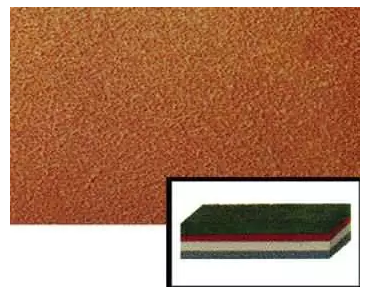
Common paint problems such as orange peels and air bubbles can be mostly avoided in paint repair if right operation methods are adopted. There are several procedures in paint repair, but the likelihood of paint problems is still very high. The causes of the problems are usually the improper handling of putty coat or primer, lack of control over the painting process, poor working environment and the deviation of paint composition. If problems are found in the painting process, the operation can be stopped and appropriate measures can be taken immediately. The problems also can be treated after the painting process according to different situations.
Common paint defects and treatment methods in spray painting will be analyzed as follows:
1. Bubbles caused by wetness
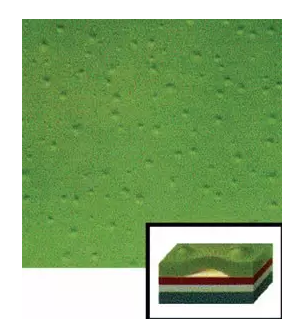
Bubbles distributed uniformly in pitting shape and of varying sizes are prone to appear under very hot and humid conditions. These bubbles disappear when the air humidity decreases and the paint film becomes even.
(1) Causes
① Insufficient adhesion between the finishing coat, floating coat, primer and substrate may result in bubbles.
② The paint will be relatively permeable. In very hot and humid conditions, water will penetrate the paint film in liquid form and then escape from the film in the form of steam, which will result in bubbles.
(2) Correction methods
① Only dry grinding can be used in wet weather. Keep the compressed air dry and ensure that the spraying surface is completely dry before spraying.
② The sprayed workpiece should not be placed in a hot and humid environment before it is completely dry.
③ After the bubbles burst, you can wait for water volatilization and the paint film will return to its original state. The workpiece must be thoroughly polished before respraying when the problem is serious. It is the best choice for stripping or bare metal to be resprayed.
2. Bubbles caused by pollution
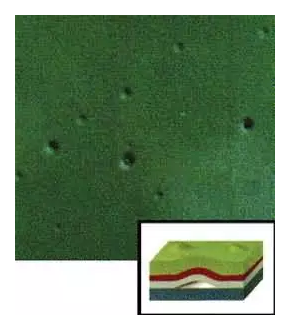
They are also called bubbles or "heat rashes", that is, the irregular blistering on the surface of the paint.
(1) Causes
① The main reason is the substrate pollution. Proper cleaning and preparation work are not carried out before spraying.
② Pollution from air supply pipes or spraying tools.
(2) Correction methods
① Clean the spraying surface and thoroughly remove the wax, grease, polishing agents and other substances.
② Ensure the compressed air, air supply pipe, spray gun and other tools clean.
③ If the bubbles have occurred, gently polish the surface, pay attention not to wear out the paint film, and then respray the surface. In severe cases, the surface should be polished to bare metal and then resprayed.
3. Dust
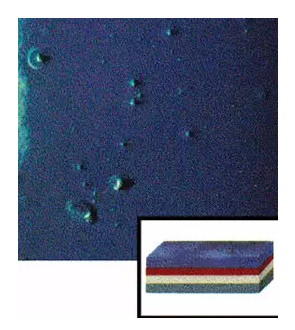
When the finishing coat is painted, there will be foreign matters or dirty spots on the finishing coat, and dust or dirty things will be wrapped in the paint film.
(1) Causes
① The painting workshop is not clean. For example, there is no filter cotton on the floor of the paint room, and the filter cotton on the ceiling has not been replaced for a long time.
② The compressed air is not clean, the paint operators do not wear special clothing, and the spraying surface is not clean.
③ The paint has not been filtered effectively before spraying.
(2) Correction methods
① Keep the paint workshop clean, replace the filter cotton in the paint room regularly, and strictly prohibit polishing putty in the paint room.
② Ensure the compressed air is clean and regularly replace the filter. Compressed air or non-dust cloth should be used to clean the spraying surface before spraying.
③ Keep the paint properly sealed; the paint should be fully stirred and filtered before spraying.
④ If there are dust spots, the surface should be polished to a smooth before respraying. For mild dust spots, polish and finish them with fine sandpaper.
4. Pinnate edge cracking
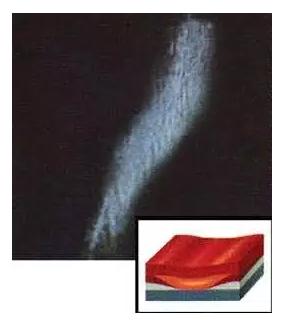
The paint film cracks around the pinnate edge, and it will show up in a very short time after the finish is sprayed.
(1) Causes
① Excessive dilution or the use of inferior diluent.
② Too coarse sandpaper is used when polishing the bevel edge, and there is no proper treatment before painting, so the solvents in the paint get into sandpaper traces and erode the film.
③ The finishing coat on the undercoat is too thick or too wet, so it doesn’t have enough time for the solvent in the paint to volatilize outward.
④ Old paint film or previously repaired defects appear, or too much putty is used.
(2) Correction methods
① Polish the pinnate edges correctly, make the transition smooth, and avoid any sharp corners and layers.
② Use the diluent as required and use the correct dilution ratio according to the specific situation of the workshop.
③ Do not blow dry the sprayed paint film, because it can only achieve surface drying.
④ When the cracks occur, the paint film surface should be polished after spraying.
5. Stripes
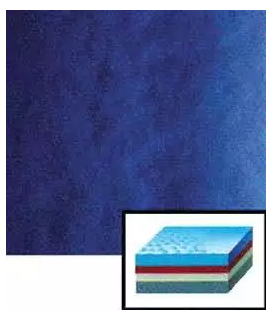
It is also called aluminium paint floating, which is a common problem in aluminium paint primer and pearl primer. The paint film appears as if it has been stroke, and some dark circles are around the aluminium paint or the surface has varying shades of colors. This phenomenon is often found only after the varnish is sprayed if it happens in the primer.
(1) Causes
① Aluminium paint is composed of a variety of different pigments and aluminum powder. If it is sprayed on too thick or wet paint layer, the leveling of the aluminum powder in the paint can not be realized, thus forming stripes.
② When spraying aluminium paint at a low temperature, the aluminium powder will accumulate in piles because it remains wet or liquid for a long time.
③ When spraying aluminium paint, if the air pressure used is low or the distance between the spray gun and the surface plate is short, too less solvent volatilization will lead to the formation of wet paint film when the paint surface reaches the working face, which will easily cause stripes.
④ Use the diluent with very slow evaporation rate, or use too much diluent.
(2) Correction methods
① Dilute the aluminium paint according to the requirements and master the correct spraying skills, such as adjusting the distance between the spray gun and the surface and controlling the speed of the spray gun.
② Avoid too thick wet paint. Appropriately raise the temperature of the paint workshop and extend the standing time between the paint films if necessary.
③ If the stripes have appeared, it is recommended to use the correct dilution ratio and construction techniques to respray the paint. If the stripes are in a primer that has been varnished, the film needs to be peeled off and resprayed.
6. Paint surface subsidence
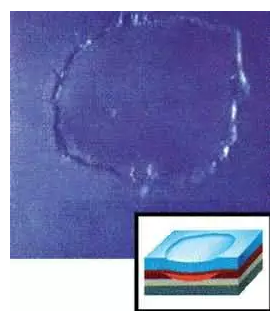
The repaired area is sunken and the finish shows a lake shape appearance.
(1) Causes
① When spraying multiple layers of paint, the previous paint surface layer is not thoroughly dry.
② It is difficult to find the putty subsidence when spraying the middle coating with low gloss, but the paint surface subsidence will appear when spraying high gloss finishing coat.
③ Multiple layers of paint are sprayed within a short period, and the standing time between the middle coating and finishing coat is not long enough.
(2) Correction methods
① All putty layers should be completely dry, especially in bad weather or low temperatures.
② Do not thicken the wet film of the middle coating and finishing coat, and control the standing time between the layers as required.
③ Do not blow dry the wet paint film surface, because it may only make the surface dry, but the solvent in the paint film can not volatilize completely.
④ when the film subsidence occurs, polish the surface to a smooth state and respray it.
7. Pinholes
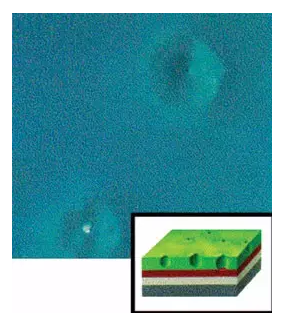
Pinholes are also called pits, which are dense holes appearing on the paint film.
(1) Causes
① The compressed air used for spraying contains moisture, or the wrong type or quatity of diluent is used in the paint.
② The wet coating is too thick, the paint is dried forcibly with a dryer, or the temperature in the spray workshop is too high or too low.
(2) Correction methods
① The discharge valve of the air compressor that supplies air source should be opened daily to allow the accumulated moisture to flow out.
② Avoid excessive thick coating. Medium film thickness ensures the correct solvent volatilization. Do not blow dry the wet paint surface, because it may cause surface crust or solvent retention in the film.
③ Strictly follow the drying rules. Select the correct diluent and dilute it in the recommended proportion.
④ Use the correct spray gun and adjust the pressure to ensure good atomization effect.
⑤ If pinholes occur, polish the surface to a smooth and respray it.
8. Pulverization
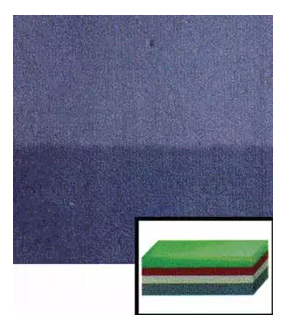
The pigment particles in the paint are no longer affected by the action of binder, and the surface of the paint film appears powdery, passivated and faded as well as lost its luster.
(1) Causes
① As the paint film is exposed in strong sunlight and other climatic conditions for a long time, the aging or loose of paint pigment particles will cause the paint surface gradually peel off in a powdery form.
② The durability of the finishing coat is damaged by the use of the wrong diluent.
③ The paint is not evenly mixed.
(2) Correction methods
① Select the appropriate diluent and mix the paint evenly before spraying.
② Mild pulverization can be removed by polishing, wax stone polishing is necessary for more serious cases, and respraying is needed for severe pulverization.
9. Acid corrosion
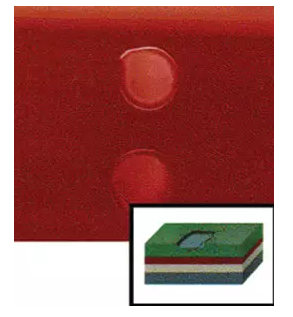
Rough stripes appear on the surface. The edges of the stripes sink into the paint film due to acid corrosion. Sometimes the colour of the film changes and the surface becomes uneven.
(1) Causes
① The acidoid in road asphalt, insect bodies and industrial pollutants, or the brake fluid and other grease spattered on the paint in the maintenance of vehicles will cause acid corrosion.
② The paint film is cleaned before it is dry, or an inappropriate cleaner is used.
③ If the old paint film contains contaminants or polishes and has not been thoroughly treated before respraying, acid erosion of the new paint film will occur.
(2) Correction method
Immediately remove the contaminant from the paint surface, polish the acid corrosion area with wax stone, and respray it after polishing in severe cases.
10. Streaks
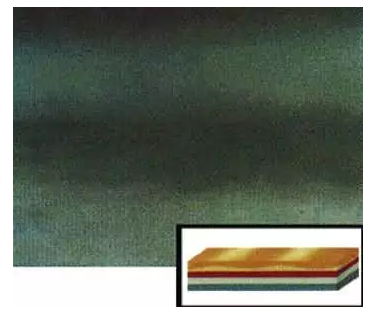
Streaks are also known as stripes or shadows. The surface of the finishing coat varies in color and the color is often in parallel. It most frequently occurs in aluminum paint and pearl paint.
(1) Causes
① There is too much paint at the edge of the fan shape sprayed by the spray gun but too little in the middle of the fan shape. The possible reasons are too high compressed air pressure, smudged spray gun or improper nozzle adjustment, so the compressed air pressure should be reduces or the spray fan shape should be narrowed.
② The spraying technology is poor, the distance between the gun and the sprayed surface often changes or the spraying overlap is not uniform, so the distance between the gun and the sprayed surface should be kept consistent in the spraying process and the overlap should be maintained at 50%.
③ Use improper paint dilution and the diluent is not added in accordance with the process requirements.
(2) Correction method
If the stripes have appeared, wait for the paint to dry and then respray a layer of paint to ensure that the compressed air pressure, the spray gun adjustment and the paint diluent ratio are correct.
11. Orange peel
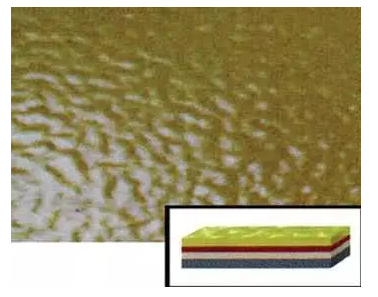
Orange peel is also known as poor leveling. The block-like effect like orange peel on the paint film is mainly caused by the poor leveling. The so-called poor leveling refers to the paint particles sprayed out from a spray gun can not flow between each other when reaching the sprayed surface after atomization, thus the smooth paint film surface can not be obtained.
(1) Causes
① Improper adjustment of the spray gun results in bad atomization of the paint. If the nozzle is not adjusted properly, the paint is ejected in a too wide fan shape, or the distance from the spray gun to the surface is too long, the paint will be excessively dry before it reaches the sprayed surface. When it happens, the atomized paint particles that reach the surface will retain the same shape as those formed by the nozzle, which will result in a rough surface texture. Ideally, the atomized paint particles should be kept moist when they reach the sprayed surface, so that the paint particles can flow and mix with each other to form a smooth surface structure.
② Inferior diluent or incorrect diluent proportion. A lack of diluents or the use of rapidly evaporating diluents will cause paint particles to overdry before they reach the sprayed surface.
③ Improper temperature. When the ambient temperature of the spraying operation is too high, the paint particles have been excessively dry in the process of reaching the sprayed surface, which will result in poor leveling.
④ Improper drying. Before the leveling of the paint particles on the sprayed surface, the process of force drying will increase the possibility of orange peel on the paint film. When carrying out multiple spraying, if the previous sprayed paint film is excessively dry, then the solvent in the latter paint will be absorbed by the previous layer, so that the paint particles can not achieve leveling.
⑤ Uneven paint mixing. There will appear bottom precipitation if the paint is stored for a long time. Therefore, the paint should be fully stirred evenly before spraying , otherwise uneven dry will appear in each part, which will result in the emergence of orange peel phenomenon.
(2) Correction method
If the orange peel has occurred, when the film is completely dry, polish the orange peel with the appropriate thickness of wax. In severe cases, use fine sandpaper to polish the orange peel to a smooth surface first, then polish it with wax or respray it.
12. Dry spraying
